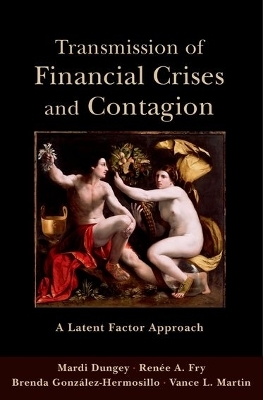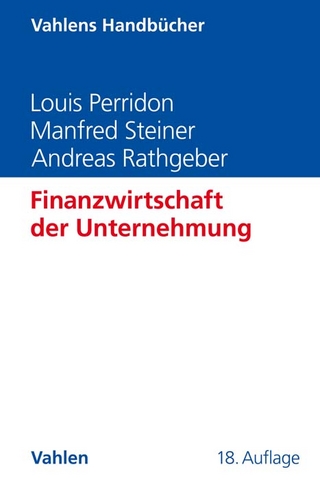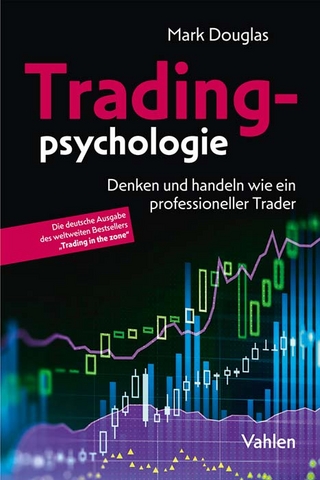
Transmission of Financial Crises and Contagion
Oxford University Press Inc (Verlag)
978-0-19-973983-7 (ISBN)
Financial crises often transmit across geographical borders and different asset classes. Modelling these interactions is empirically challenging, and many of the proposed methods give different results when applied to the same data sets. In this book the authors set out their work on a general framework for modeling the transmission of financial crises using latent factor models. They show how their framework encompasses a number of other empirical contagion models and why the results between the models differ. The book builds a framework which begins from considering contagion in the bond markets during 1997-1998 across a number of countries and culminates in a model which encompasses multiple assets across multiple countries through over a decade of crisis events from East Asia in 1997-1998 to the sub prime crisis during 2008. Program code to support implementation of similar models is available.
Mardi Dungey: Professor of Economics and Finance, University of Tasmania Renee A. Fry: Research Associate, Centre for Financial Analysis and Policy Brenda Gonzalez-Hermosillo: Deputy Division Chief of Global Financial Stability, Monetary and Capital Markets Department, International Monetary Fund Vance Martin: Professor of Econometrics, University of Melbourne
Preface vii ; Acknowledgements ix ; 1 Introduction 1 ; 2 Review of the Empirical Literature 7 ; 2.1 Introduction 7 ; 2.2 Defining Contagion 8 ; 2.3 AModel of Interdependence . 10 ; 2.4 An EmpiricalModel of Contagion 12 ; 2.4.1 Bivariate Testing . 13 ; 2.4.2 Multivariate Testing . 15 ; 2.4.3 Structural Breaks . 16 ; 2.4.4 Using Just CrisisData 17 ; 2.4.5 Autoregressive and HeteroskedasticDynamics . 17 ; 2.5 Correlation and Covariance Analysis 19 ; 2.5.1 Bivariate Testing . 20 ; 2.5.2 Alternative Formulation . 22 ; 2.5.3 Multivariate Testing . 24 ; 2.5.4 Endogeneity Issues 27 ; 2.5.5 Relationship withOtherModels . 29 ; 2.6 Application 33 ; 2.6.1 Stylized Facts . 34 ; 2.6.2 Implementation Issues 34 ; 2.6.3 Contagion Testing 36 ; 2.7 Conclusions 38 ; 3 Contagion in Global Bond Markets 41 ; 3.1 Introduction 41 ; 3.2 Background of Events and Propositions . 43 ; 3.2.1 Stylized Facts . 43 ; 3.2.2 Propositions 45 ; 3.3 Data 47 ; 3.4 AFactorModel of Bond Spreads 48 ; 3.5 EstimationMethod 54 ; 3.6 Empirical Results . 56 ; 3.7 Conclusion . 59 ; 3.A Data Definitions and Sources 62 ; 3.B Descriptive Statistics . 62 ; 3.C Unit Root Tests 62 ; 3.D EstimatedGARCHModels 63 ; 4 Contagion in Global Equity Markets 65 ; 4.1 Introduction 65 ; 4.2 AModel of Financial Turmoil 66 ; 4.2.1 ABenchmarkModel . 67 ; 4.2.2 AModel Incorporating Contagion 69 ; 4.3 Empirical Issues 72 ; 4.3.1 Data 72 ; 4.3.2 GMMEstimator . 74 ; 4.4 Empirical Results . 75 ; 4.4.1 Parameter Estimates . 75 ; 4.4.2 Volatility Decompositions 77 ; 4.4.3 Structural Break Tests 78 ; 4.4.4 Robustness Checks 78 ; 4.4.5 Comparison with BondMarket Transmissions . 79 ; 4.5 Conclusions 80 ; 5 Are Crises Alike? 83 ; 5.1 Introduction 83 ; 5.2 AModel of Contagion 85 ; 5.3 Empirical Factor Specification 89 ; 5.3.1 Noncrisis Specification 90 ; 5.3.2 Crisis Specification 91 ; 5.4 Data 95 ; 5.4.1 Filters . 96 ; 5.4.2 CrisisDates 97 ; 5.5 Empirical Results . 99 ; 5.5.1 Evidence of Contagion 100 ; 5.5.2 Comparison of Contagion Channels Across Crises . 103 ; 5.5.3 Testing the Channels of Contagion . 104 ; 5.6 Robustness Checks andAdditional Tests 105 ; 5.6.1 CrisisDating SensitivityAnalysis 105 ; 5.6.2 ConditionalMoment Tests 107 ; 5.6.3 Structural Break Tests 107 ; 5.7 Conclusions 108 ; 5.A Model Derivations . 111 ; 5.A.1 Optimal PortfolioWeights 111 ; 5.A.2 Informed Conditional Expectations . 112 ; 5.A.3 Uninformed Conditional Expectations 113 ; 5.A.4 Excess Returns Equation . 115 ; 5.B Data Sources and Definitions 118 ; 5.C Additional VarianceDecompositions 118 ; 6 Characterizing Global Risk 119 ; 6.1 Introduction 119 ; 6.2 AModel of Risk Premia . 121 ; 6.2.1 Model Specification 122 ; 6.2.2 Identifying RiskQuantities 124 ; 6.2.3 Estimation . 126 ; 6.3 Empirical Estimates . 126 ; 6.3.1 RiskQuantities 126 ; 6.3.2 Risk Prices 128 ; 6.4 Historical Decomposition of Risk Premia 129 ; 6.4.1 Benchmark Spread Estimates 130 ; 6.4.2 Global Risk Factor Estimates 130 ; 6.4.3 Country Risk Factor Estimates . 131 ; 6.4.4 ContagionRisk Factor Estimates 132 ; 6.5 Conclusions 132 ; 6.A Data Definitions and Sources 134 ; 6.B CrisisDates 134 ; 7 Conclusions Bibliography
| Reihe/Serie | CERF Monographs on Finance and the Economy |
|---|---|
| Zusatzinfo | 10 line illustrations |
| Verlagsort | New York |
| Sprache | englisch |
| Maße | 239 x 163 mm |
| Gewicht | 476 g |
| Themenwelt | Wirtschaft ► Betriebswirtschaft / Management ► Finanzierung |
| Betriebswirtschaft / Management ► Spezielle Betriebswirtschaftslehre ► Bankbetriebslehre | |
| Wirtschaft ► Volkswirtschaftslehre ► Finanzwissenschaft | |
| Wirtschaft ► Volkswirtschaftslehre ► Ökonometrie | |
| ISBN-10 | 0-19-973983-8 / 0199739838 |
| ISBN-13 | 978-0-19-973983-7 / 9780199739837 |
| Zustand | Neuware |
| Informationen gemäß Produktsicherheitsverordnung (GPSR) | |
| Haben Sie eine Frage zum Produkt? |
aus dem Bereich


